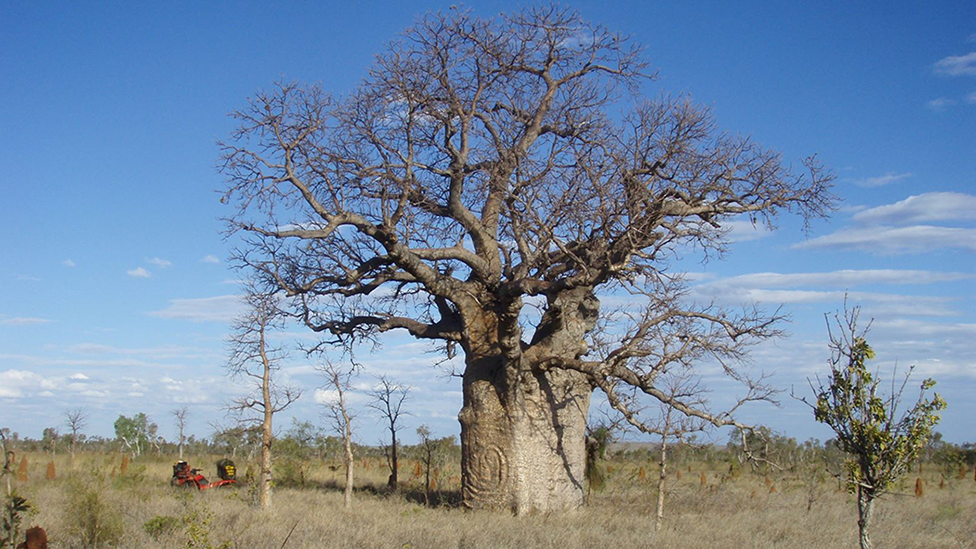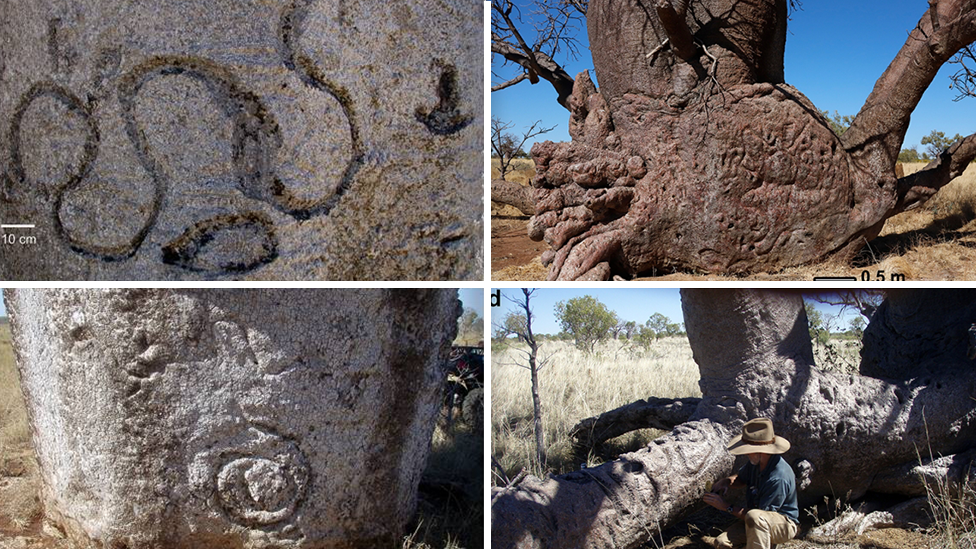Fear ancient Aussie symbols could be lost forever: 'Race against time'
Scientists are using Google Earth to pinpoint the location of ancient trees adorned with Indigenous imagery before they are destroyed.
Twelve carved boabs were initially located in the remote Tanami desert in northern Australia after an Australian National University (ANU) professor saw them described in long-forgotten accounts by a museum researcher.
On Wednesday Professor Sue O'Connor's team published their findings in the journal Antiquity. They are now working to find other examples of the trees.

Boabs are a particularly long-lived species, that may survive for up to 2000 years. The carvings could be hundreds of years old, and this will be confirmed using radiocarbon dating.
What do the ancient boab trees show?
The culturally significant trees picture the king brown snake and are situated in the remote Tanami desert on a dreaming track that stretches between Broome and the Northern Territory.
Researchers from ANU, The University of Western Australia and the University of Canberra are working with five Traditional Owners.

Traditional Owner Brenda Garstone has warned Indigenous stories and knowledge inscribed on the trees must not be lost.
“We are in a race against time to document this invaluable cultural heritage," she said.
Why is Australia likely to lose these desert boabs?
Trees of this kind were traditionally carved and updated for generations but this practice was interrupted by white settlement, which little more than two centuries on threatens to destroy them. It’s suspected there were hundreds more boabs just 50 years ago.
Cattle that graze in the area are known to eat boab bark during drought. Lightning strikes can blow them up, and climate change is already rapidly killing a related species of trees in Africa.
Professor O’Connor told Yahoo News Australia the trees are so “enormous” they could also be at the end of their natural lifespan and preserving them will not be possible.
“Boab trees aren't like hardwoods. The inner part of the boab is very soft and pithy, like fibre,” she said.
“When you go back and you see a dead boab, the tree and its carvings will just collapse. It looks just like a dead elephant.
“Within a few months, there's no evidence that the tree ever existed and the carvings are lost forever.”
Do you have a story tip? Email: newsroomau@yahoonews.com.
You can also follow us on Facebook, Instagram, TikTok and Twitter and download the Yahoo News app from the App Storeor Google Play.



